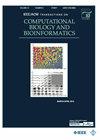SIG:利用基因突变结构信息进行基于图谱的癌症亚型分层。
IF 3.4
3区 生物学
Q2 BIOCHEMICAL RESEARCH METHODS
IEEE/ACM Transactions on Computational Biology and Bioinformatics
Pub Date : 2024-06-14
DOI:10.1109/TCBB.2024.3414498
引用次数: 0
摘要
体细胞肿瘤具有高维、稀疏和样本量小的特点,因此基于体细胞基因组数据进行癌症亚型分层是一项挑战。目前提高癌症聚类性能的方法主要集中在降维、整合多组学数据或生成真实样本等方面,但却忽略了患者-基因矩阵中突变基因之间的关联。我们将这些关联称为基因突变结构信息,其中隐含了癌症亚型信息,可以增强亚型聚类。我们引入了一种新的癌症亚型聚类方法,称为 SIG(图内结构信息)。由于癌症是由基因组合驱动的,因此我们在同一患者样本中逐一建立突变基因之间的关联,并用图来表示它们。两个突变基因之间的关联对应于图中的一条边。然后,我们合并所有突变基因之间的关联,得到一个结构信息图,从而丰富基因网络,提高其与癌症聚类的相关性。我们将体细胞肿瘤基因组与丰富的基因网络整合在一起,并将其传播到相似网络区域的突变患者群中。与 SOTA 方法相比,我们的方法实现了更优越的聚类性能,卵巢和 LUAD 数据集的聚类实验证明了这一点。代码见 https://github.com/ChangSIG/SIG.git。本文章由计算机程序翻译,如有差异,请以英文原文为准。
SIG: Graph-Based Cancer Subtype Stratification With Gene Mutation Structural Information
Somatic tumors have a high-dimensional, sparse, and small sample size nature, making cancer subtype stratification based on somatic genomic data a challenge. Current methods for improving cancer clustering performance focus on dimension reduction, integrating multi-omics data, or generating realistic samples, yet ignore the associations between mutated genes within the patient-gene matrix. We refer to these associations as gene mutation structural information, which implicitly includes cancer subtype information and can enhance subtype clustering. We introduce a novel method for cancer subtype clustering called SIG(Structural Information within Graph). As cancer is driven by a combination of genes, we establish associations between mutated genes within the same patient sample, pair by pair, and use a graph to represent them. An association between two mutated genes corresponds to an edge in the graph. We then merge these associations among all mutated genes to obtain a structural information graph, which enriches the gene network and improves its relevance to cancer clustering. We integrate the somatic tumor genome with the enriched gene network and propagate it to cluster patients with mutations in similar network regions. Our method achieves superior clustering performance compared to SOTA methods, as demonstrated by clustering experiments on ovarian and LUAD datasets.
求助全文
通过发布文献求助,成功后即可免费获取论文全文。
去求助
来源期刊
CiteScore
7.50
自引率
6.70%
发文量
479
审稿时长
3 months
期刊介绍:
IEEE/ACM Transactions on Computational Biology and Bioinformatics emphasizes the algorithmic, mathematical, statistical and computational methods that are central in bioinformatics and computational biology; the development and testing of effective computer programs in bioinformatics; the development of biological databases; and important biological results that are obtained from the use of these methods, programs and databases; the emerging field of Systems Biology, where many forms of data are used to create a computer-based model of a complex biological system

 求助内容:
求助内容: 应助结果提醒方式:
应助结果提醒方式:


